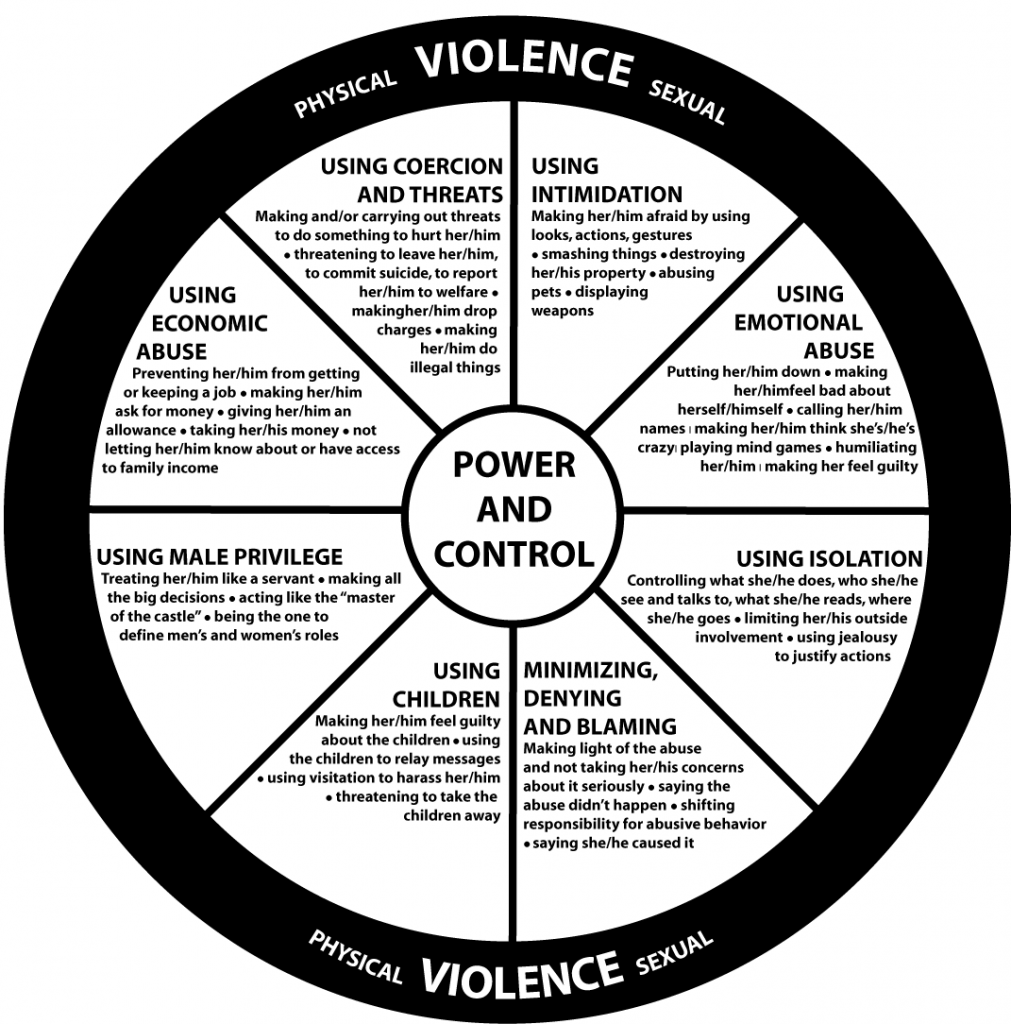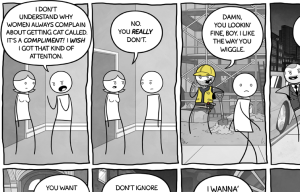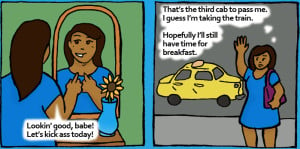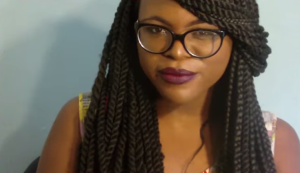
One teen with an arm around the other, both smiling.
In 2002, a group of high school girls approached their male teacher and argued that his course needed to include a study of gender. After all, it was titled “Citizenship and Social Justice” and included an intensive study of race and racism.
Predictably, this White male teacher responded defensively. “We can’t study everything,” he retorted. “If we include gender, doesn’t that mean we have include every social justice issue? That’s impossible. Where do we draw the line?”
These young women persisted, even offering to help plan the curriculum. Fortunately, they didn’t need to stage a sit-in or lead a hunger strike or chain themselves to chairs to convince their teacher.
If you haven’t already guessed, that defensive male teacher was yours truly. Despite my status-quo-subverting teaching, I had become the man, the barrier that students had to surmount before receiving the education they deserved.
And it makes sense that I had been more equipped to teach about race than gender. Throughout my career, I have found numerous trainings on racism to aid a teacher. Gender justice trainings, on the other hand, are few and far between.
And I don’t mean to minimize the need for racial justice in our schools. In fact, my primary mission in this world is to expand the study of race and increase Ethnic Studies offerings in our public schools.
But we also need Gender Studies.
Here are eight reasons why (in no particular order):
1. Our culture is toxic to girls
According to The Representation Project:
- In the last ten years, rates of depression among girls and women have increased twofold.
- Suicide was the number one leading cause of death in teenage girls (ages 15-18) globally in 2014.
- Among children as young as 6-8, half of girls feel they should be thinner.
Loads of other sources report similarly dire statistics.
If girls are to navigate such an oppressive landscape, they need to better understand it. Understanding it requires analysis.
No one questions the analysis of literature in the classroom. But Shakespeare and others of the literary canon do not lurk on billboards, grocery store shelves, and cell phone screens, sending sex-obsessed, slut-shaming, fat-shaming, whitewashed, youthwashed, heterosexist, cissexist, ableist messages, all with one take-away in common: you are not good enough.
Literature does not teach this lesson; our culture does. So let’s study that text as well.
2. Our culture is toxic to boys
While I would never argue that the box of masculinity causes the same suffering as a culture of misogyny, a box is still constricting and limiting.
And the statistics also reveal a disturbing portrait of boyhood. The Representation Project reports:
- Suicide is the third leading cause of death for boys.
- Compared to girls, boys are two times more likely to flunk or drop out of school, two times more likely to receive special education services, and four times more likely to be expelled.
Perhaps poetry can make the point better than numbers. In “The Replacement,” Tony Hoagland powerfully shows us the growing-up process for many boys:
It is a kind of cooking
the male child undergoes:
to toughen him, he is dipped repeatedly
in insult–peckerwood, shitbag, faggot,
pussy, dicksucker– until spear points
will break against his epidermis,
until his is impossible to disappoint.
Boys too benefit from deconstructing these systems. Without deconstructing them, you can’t reconstruct a culture that allows boys to show emotions without social repercussions. Or a world that allows boys to solve a problem without violence.
3. Our culture is toxic to those who challenge the gender binary
Think back to your primary and secondary classroom experiences. Can you think of even one non-binary perspective in any of your classes? Or an agender perspective? Or even a transgender perspective?
A Gender Studies course, at least a good one, provides a home for these perspectives that otherwise face near complete erasure in our schools, not to mention in mainstream media.
And while some schools have support groups, like Gay-Straight Alliances, representation and support should not come just from a club that meets outside of class time, but from the school itself. And part of a school is its curricula.
The reality is that trans youth and queer youth of color are among our most vulnerable school populations. Gender Studies courses not only increase their positive representation in the curriculum but they also educate the masses who have the privilege to be unaware of LGBTQIA+ issues and are the ones most likely to create a hostile educational environment.
4. Too many students face harassment and violence on a regular basis
Many of my students, primarily young women, report that street harassment occurs regularly on their daily commutes to and from school.
Studies consistently show that queer women experience some of the highest rates; according to the Stop Street Harassment, “seven of 10 LGBT people experienced street harassment by age 17, compared to 49 percent of straight people.”
Over the years, several of my female students have shared that they have survived sexual assault and domestic abuse.
For too many, harassment and violence are so frequent that they have become normalized. It’s so normal that some young women have shared once wishing they were harassed because that would have meant that they too were desirable.
Gender Studies courses call bullshit on that norm.
Gender Studies courses allow a safe space to break the silence surrounding sexual violence and challenge its taboo (a taboo seemingly put into place to protect the perpetuators). Not only can breaking the silence empower the survivors, but it can go a long way in preventing future abusers.
5. Those committing the harassment and violence urgently need education
Multiple studies confirm that an alarming number of men don’t understand consent or rape (learn more here and here).
And while most men might understand that egregious acts of physical violence are illegal, many do not understand the extent of behaviors that are indeed abusive (even if not all are technically illegal).

The Wheel of Power via www.thehotline.org
A recent field trip to New Beginnings, an organization dedicated to ending domestic violence (DV), taught me that this violence-prevention education is unavailable in many of our public schools.
In fact, New Beginnings must work hard fundraising just to be able to provide such outreach services to our schools since they are desperately needed and under-addressed. And during tough economic times, which services are DV organizations most likely forced to cut back? Outreach.
And the cycle the violence continues.
Gender Studies courses institutionalize violence prevention and help break the cycle.
6. Systems of privilege need confronting
Perhaps the number one rule of privilege is that if you have it, you are far less likely to notice it. Thus, men move about oblivious to their male privilege, straight people oblivious to their straight privilege, and cisgender people oblivious to their cis privilege.
You can’t dismantle systems of which you are unaware. Gender Studies courses make moving about obliviously impossible. And with organizations like Everyday Feminism and Rethinking Schools, there is now no shortage of curricular resources available.
7. Too much of our education is male-centric
Again, think back to your classroom experiences. How male-centric was it? Sure, many of us have had those teachers who work hard to include underrepresented perspectives, but those teachers are hardly the norm.
Crack open a history textbook. Or a science textbook. Or a mathematics textbook. Look up “women” and you’ll likely find an entry for a notable woman.
Look up “men” and you will unlikely find anything listed. In other words, the default gender is men in too many of our classes.
8. Feminism is too often misunderstood and demonized
While there is no single definition of feminism, Actress Ellen Page pretty much nails why the concept, despite its many manifestations, has been so thoroughly demonized: “…how could it be any more obvious that we still live in a patriarchal world when feminism is a bad word?”
Similarly, could it be any more obvious why the concept of feminism is not an integral part of our education?
***
It really comes down to what you feel the function of public education is.
Is it simply to train a new workforce to oil the cogs of capitalism’s machines? Or is to foster critical thinkers capable of envisioning a different kind of machinery, one not based primarily on profit, consumption, and exploitation?
Is the function of education to replicate the status quo? Or, given the widespread injustices about which Everyday Feminism educates daily, is the function to interrupt it?
I’m not hiding my bias here. In close to 20 years of teaching experience, I have resoundingly found that students are far more invested in their education when they are learning about issues that directly affect their lives and the lives of those close to them.
And too many students across this country are unnecessarily suffering because of their gender or sexual identities.
Gender Studies courses are a powerful response. One former student defended the study of gender: “Everyone deserves to feel safe and to be treated equally…The only way to find true equality is to hear the voices that are constantly silenced.”
Another wrote, “Because women need to be treated as people, rather than sexual objects. Because women are raped, beaten, and murdered just for existing. Because men are pushed up to the impossible standard of masculinity, while women need to feel pretty to feel human. Because everyone is important, no matter their gender.”
Last year, Sweden, “one of the most gender-equal countries in the world,” successfully provided a copy of Chimamanda Ngozi Adichie’s “We Should All Be Feminists” to every 16-year-old student in the country – all without controversy.
Doesn’t that mean that the United States, a country with deep gender inequality, can manage to integrate more Gender Studies courses into the many credits needed to graduate high school?
We can and – when more of us demand it from our teachers, district administrators, and elected officials – we will.
[do_widget id=’text-101′]
Jon Greenberg is a Contributing Writer for Everyday Feminism. He is an award-winning public high school teacher in Seattle who has gained broader recognition for standing up for racial dialogue in the classroom — with widespread support from community — while a school district attempted to stifle it. To learn more about Jon Greenberg and the Race Curriculum Controversy, visit his website citizenshipandsocialjustice.com. You can also follow him on Facebook, Tumblr, and Twitter @citizenshipsj.
Search our 3000+ articles!
Read our articles about:
Our online racial justice training
Used by hundreds of universities, non-profits, and businesses.
Click to learn more




















